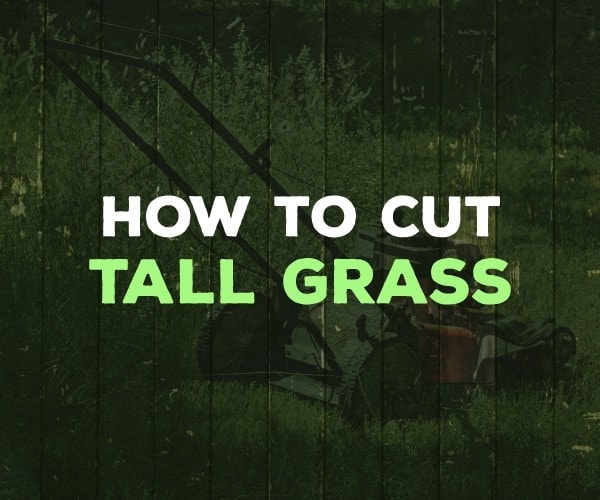They say the only two guarantees in life are death and taxes. I argue that there is a third: your lawn will continue to grow, no matter what. The lawn doesn’t care about your vacation, holidays, or anything else that may have prevented you from mowing.
If you’ve reached a point where your lawn is overgrown, you’ll need to learn how to cut tall grass. Looking out at your lawn, it may seem like an incredibly big project, but don’t worry. By the time you’re finished with this guide, you should feel confident about taking your lawn back.
What You’ll Need
Fortunately, you’ll only need a few tools to take down your overgrown lawn. Learning how to cut tall grass is easier than you may have thought. Here’s what you’ll need:
- Weed whacker
- Lawnmower
- Rake
- Work gloves
Step I: Taking a Little Off the Top
If your lawn is severely overgrown, you don’t want to cut it all at once. Each blade of grass contains nutrients which are vital to the healthy growth of your lawn. If you cut back the lawn entirely, all at once, you’re going to end up robbing the lawn of the nutrients it needs for healthy growth.
To maintain a healthy lawn, you’ll want to trim back the lawn gradually. The first step will be to use your weed whacker to trim back about ⅓ of the total height of your lawn.
Once you’ve trimmed the top of the lawn, use the rake to remove the grass you’ve cut, and bag it.
Before going any further, you’ll want to give the lawn a few days to recuperate before proceeding with the rest of your lawn makeover.
Step II: Rinse, Repeat
Depending on the height of your lawn, you may be able to skip this step. But, if you’re still looking at grass that’s a foot high or taller after you’ve completed step one, you’ll want to trim the grass back further before using the lawn mower.
Trim the lawn back further using your weed whacker. This time, trim the lawn to about ½ it’s current height. When you’re finished, you should be left with grass that’s manageable enough for your mower to cut.
Before moving on to the next step, rake the lawn again to remove all of the grass you’ve just cut.
Step III: Preparing the Mower
Chances are, your lawn mower is set up to trim back a lawn that’s only a few inches high. If you use your mower with the blade at that height, the mower will bog down and stall as it tries to chew through the overgrown lawn.
To prevent this, you’ll want to adjust the mower to account for the additional grass height. Most gasoline mowers have two adjustment levers located near the back tires of the lawn mower.
Electric mowers often only have a single lever to adjust the height of the cut. Some companies express the height of the mower in inches, where others use a number to define the height of the mower blades.
Regardless of the type of mower you have, you’ll want to adjust your mower to a higher setting, which will allow you to manage the lawn without the mower clogging or stalling out. The height of your lawn will dictate how much you need to adjust the cutting height of the mower.
Once you’ve adjusted the mower to a manageable height, you can begin cutting.
Step IV: Mowing the Lawn
With your mower properly adjusted, it’s time to mow the grass for the first time.
Start your mower, and begin attacking the lawn. Use overlapping passes as you mow to ensure that each blade of grass is cut evenly. Most importantly, take your time and mow at a slow, even pace.
High grass can wreak havoc on a mower’s engine, so a slow and steady pace will help ensure that your mower doesn’t become overwhelmed by the large workload on its plate.
Step V: Water the Lawn & Wait
Once you’ve finished mowing, give your lawn a nice, long watering session. Water is vital to the health of your lawn, and a nice extended watering session is just what your lawn needs to recover after it’s been trimmed back.
Step VI: The Final Cut
After a few days have passed, your lawn should be fully recovered from the haircut it’s received. Now, you can finally mow the lawn to its final height.
Adjust your mower back to its usual height. The best height for your lawn is largely a matter of personal preference. As a rule of thumb, a final height somewhere between 2 and 3.75” is ideal for your lawn.
Once you’ve adjusted your mower to the height you like best, mow the lawn one more time, being sure to overlap, so you have a nice, even lawn when you’re finished.
Wrapping Up
If you’re dealing with an overgrown lawn, learning how to cut tall grass is imperative. Fortunately, cutting back tall grass is a fairly easy task you’ll be able to accomplish with tools you probably already own.
It may take you a few days in total, but the tips in this guide will help you take control of your lawn, and trim it back to a manageable level that allows you to showcase the beauty of your home.

